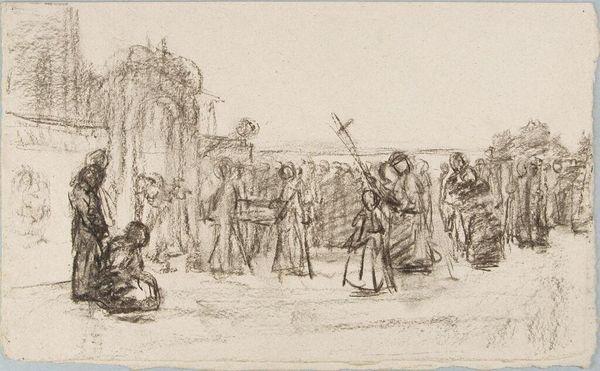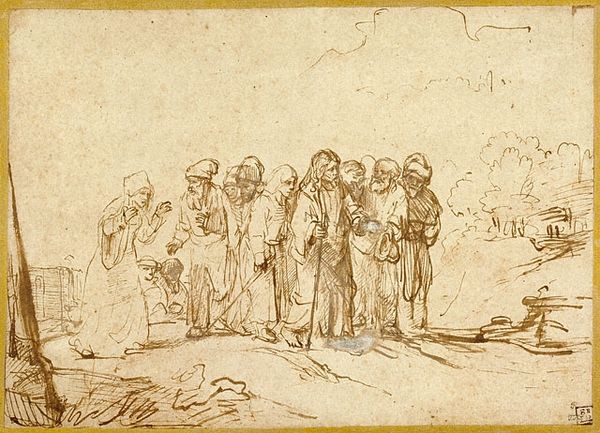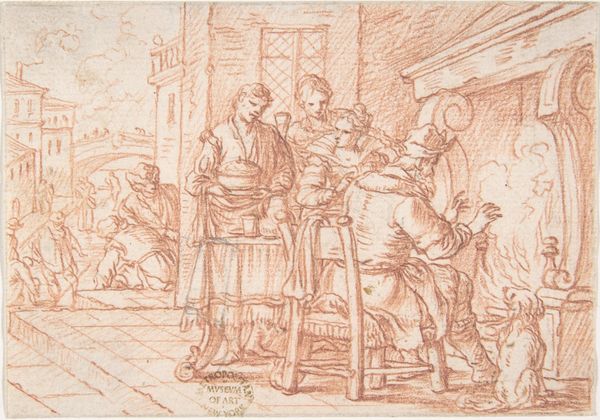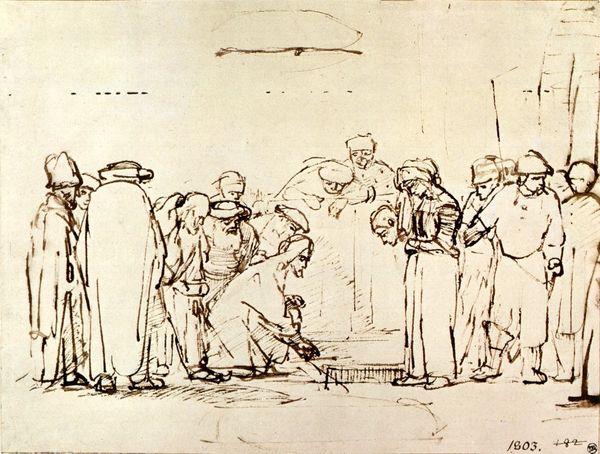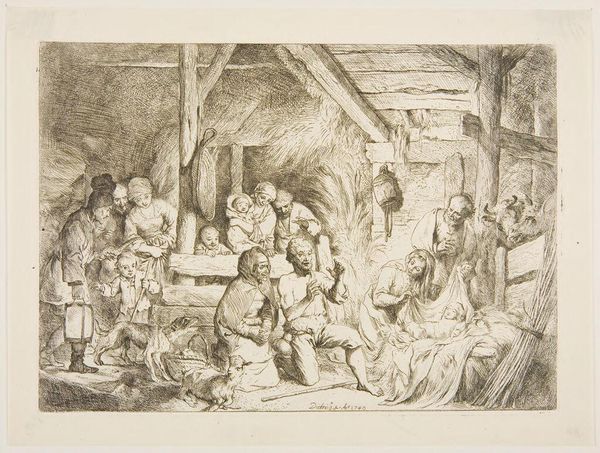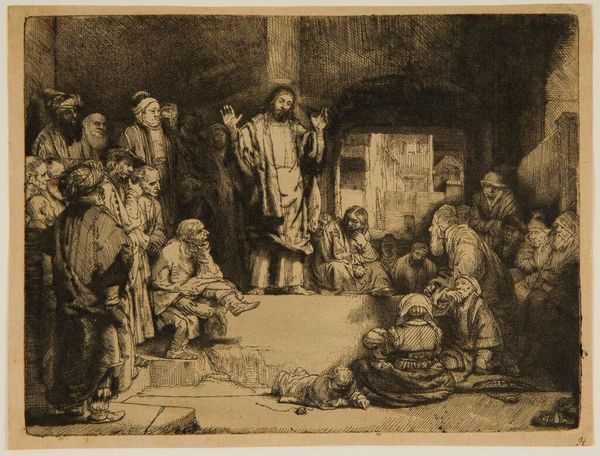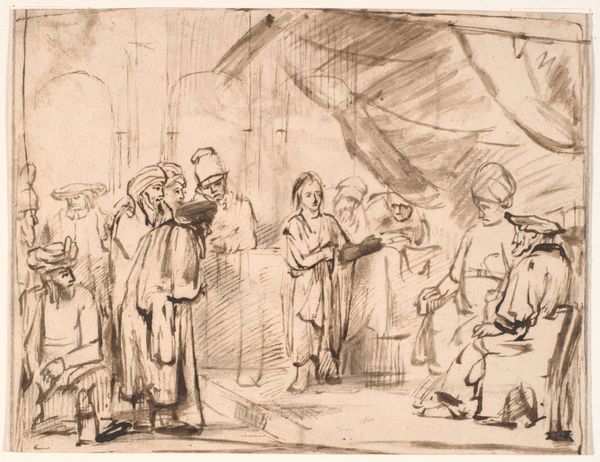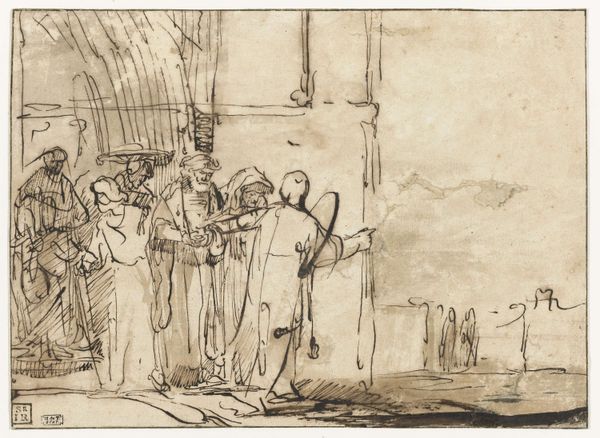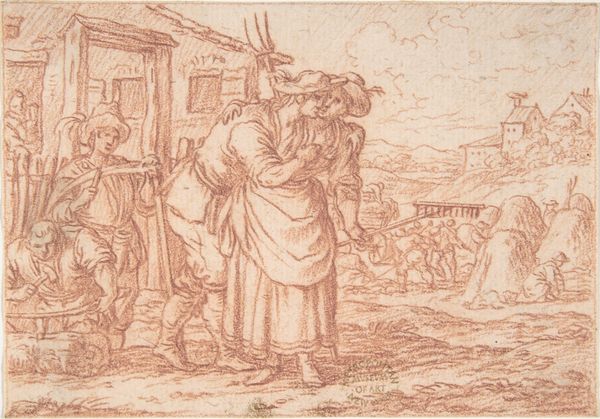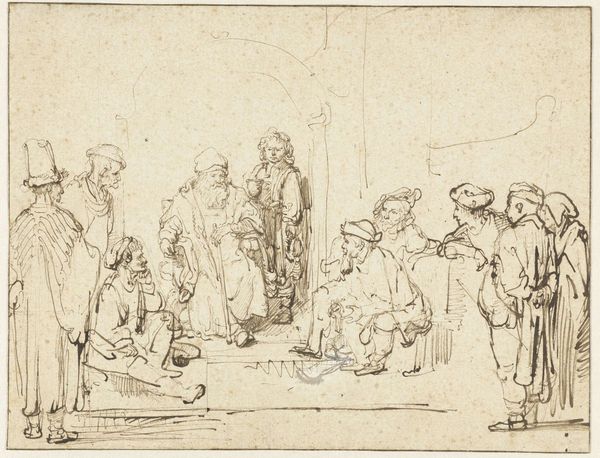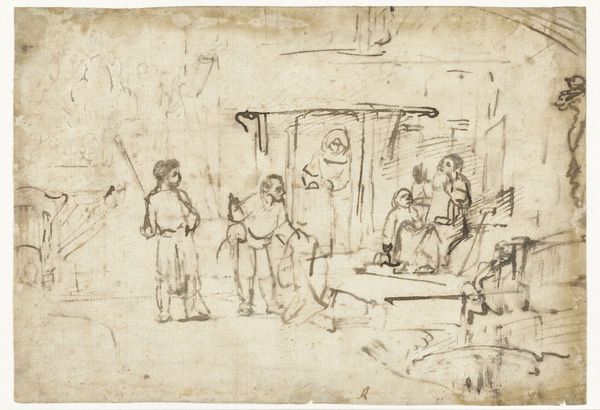
drawing, paper, ink, pen
#
drawing
#
narrative-art
#
baroque
#
pen sketch
#
pencil sketch
#
figuration
#
paper
#
ink
#
pen
#
genre-painting
Copyright: Public domain
Editor: So this is Rembrandt van Rijn's "Jacob shown the Bloodstained Coat of Joseph," a pen and ink drawing from 1657. There’s such raw emotion conveyed with so few lines. It feels incredibly immediate, even centuries later. What do you see in this piece? Curator: It’s tempting to see it simply as a depiction of biblical grief, but let's think about what Rembrandt, as a 17th-century Dutch artist, might be trying to say about power, family, and even colonial structures through this scene. Notice how Jacob, the patriarch, is positioned as utterly broken. How might that vulnerability be challenging traditional notions of patriarchal authority? Editor: That's interesting. I was just focused on the drama, the obvious sadness, and hadn't considered a challenge to authority. Are you saying Rembrandt might be commenting on social hierarchies? Curator: Absolutely. Consider the historical context. The Dutch Golden Age was built on global trade and, tragically, colonial exploitation. Biblical narratives were often used to justify such systems. Is Rembrandt, perhaps, inviting us to question those justifications by humanizing Jacob in his moment of intense sorrow? The focus on emotion becomes a powerful tool, doesn’t it? Editor: It does. It’s like he's forcing us to see the human cost of any system of power. I was just reading it as a family tragedy, but that colonial subtext adds another layer of meaning. Curator: Precisely. It opens the work up to contemporary dialogues about representation, responsibility, and the complex legacies of historical narratives. How can we look at historical art without reinforcing harmful stereotypes? This is part of Rembrandt's work and influence, isn’t it? Editor: This has really given me a lot to think about in terms of how historical artwork relates to power and representation today. It’s really inspiring, I didn't think of it that way. Curator: Exactly, understanding social issues of then and today enriches our perspective when we see art as both artifact and active participant in the social imaginary.
Comments
No comments
Be the first to comment and join the conversation on the ultimate creative platform.

